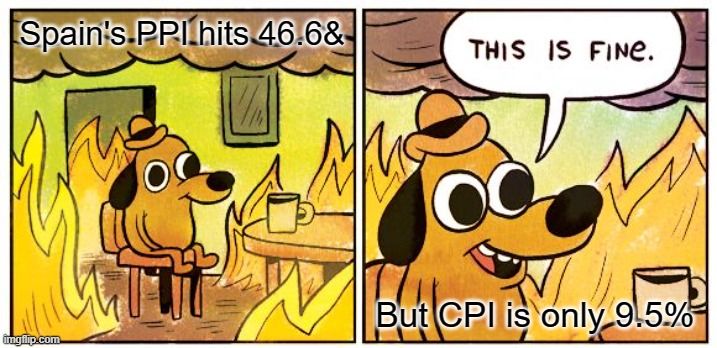PPI vs. CPI

Spain’s Producer Price Inflation (PPI) climbed to a fresh record high of 46.6% YoY in March but what exactly is PPI and does that mean CPI is going to explode in Spain? Let's unpack.
…and you thought Germany’s PPI was high. @SoberLook pic.twitter.com/CPLMcvBQnk
— Danielle DiMartino Booth (@DiMartinoBooth) April 26, 2022
PPI measures the changes in sale prices for the entire domestic market of goods and services, while CPI measures price changes in a basket of goods and services purchased out of pocket by average urban households. The two indexes reveal different aspects of economic activity.
If the prices paid to producers increase, businesses must decide between charging higher prices or taking a cut in profits. The ability to pass along price increases depends on the strength and competitiveness of the business and its industry.
Another thing to note is that PPI almost always runs higher and is more volatile than CPI. Business owners would know how hard it is to increase the prices for their goods and services, and this acts as a buffer between PPI and CPI:
I suppose it's mildly comforting to know that the increase in CPI is not going to be as high as the PPI, but things are not looking so swell in Spain...
Hope this helped and this was my fourth post for #ship30for30!